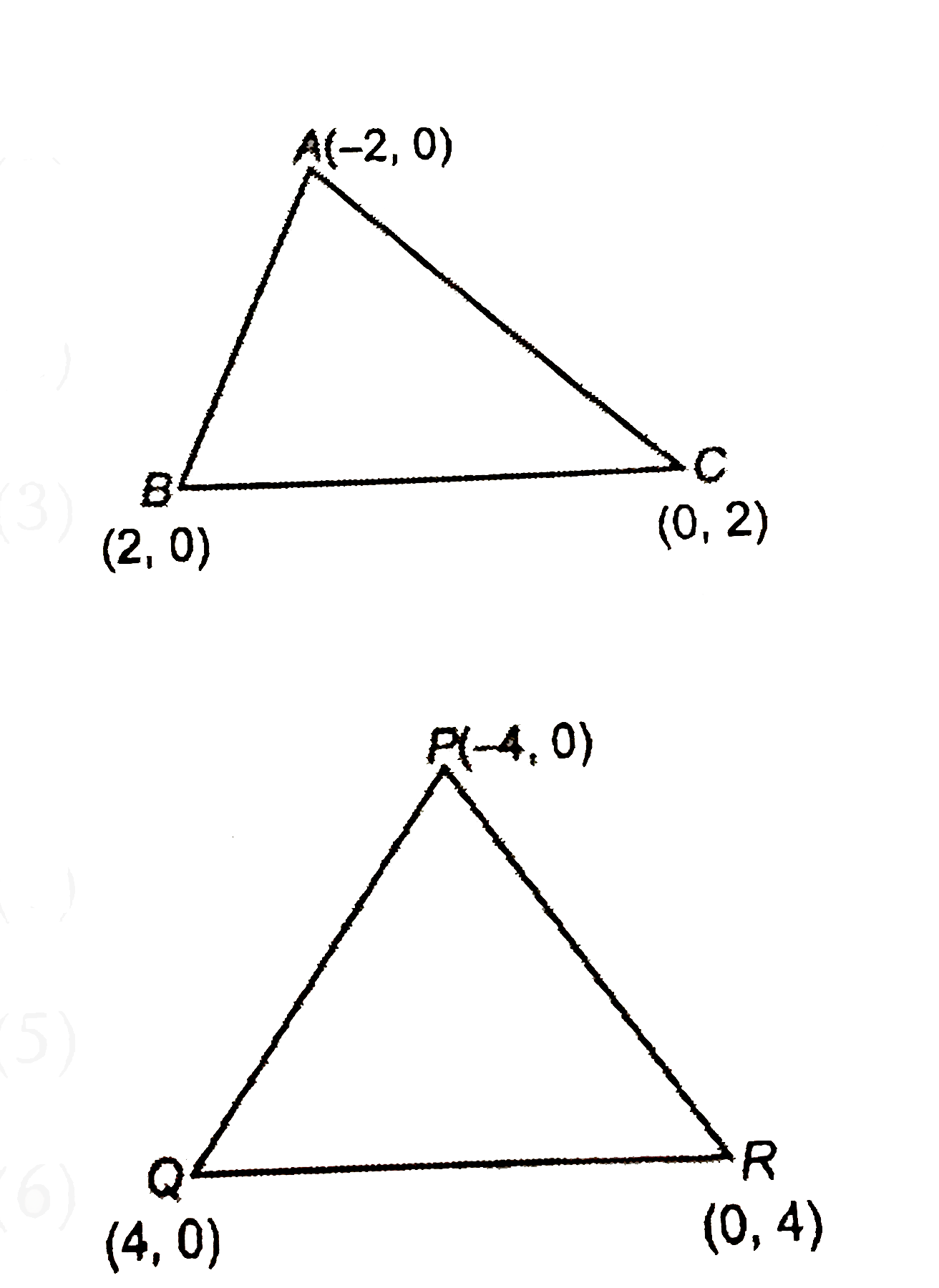Show that ΔABC, where A(−2,0),B(2,0),C(0,2)andΔPQR where P(−4,0),Q(4,0)andR(0,4) are similar triangles.
Video Solution
Text Solution
We have, A≡(−2,0),B≡(2,0)andC≡(0,2)
∴ Length of sides of ΔABC are,
AB=√(2+2)2+(0−2)2=4 …(1)
BC=√(0−2)2+(2−0)2=2√2 ...(2)
CA=√(0+2)2+(2−0)2=2√2 ...(3)

Also, it is given that
P≡(−4,0),Q≡(4,0)andR≡(0,4)
∴ Length of sides of ΔPQR are
PQ=√(4+4)2+(0−0)2=8 ...(4)
QR=√(0−4)2+(4−0)2=4√2 ...(5)
PR=√(0+4)2+(4−0)2=4√2 ...(6)
Here, ABPQ=48=12 [from (1) and (4)]
BCQR=2√24√2=12 [from (2) and (5)]
and ACPR=2√24√2=12 [from (3) and (6)]
Since ABPQ=BCQR=ACPR ( each equals 12)
∴ ΔABC~ΔPQR (∵ corresponding sides are proportional)
|
Updated on:21/07/2023
Topper's Solved these Questions
- BOOK - NAGEEN PRAKASHANCHAPTER - CO-ORDINATE GEOMETRYEXERCISE - Miscellaneous Examples8videos
CO-ORDINATE GEOMETRY
- BOOK - NAGEEN PRAKASHANCHAPTER - CO-ORDINATE GEOMETRYEXERCISE - Problems Of NCERT/exemplar14videos
CO-ORDINATE GEOMETRY
- BOOK - NAGEEN PRAKASHANCHAPTER - CIRCLESEXERCISE - Revision Exercise Long Answer Questions3videos
CIRCLES
- BOOK - NAGEEN PRAKASHANCHAPTER - CONSTRUCTIONSEXERCISE - PROBLEMS FROM NCERT/ EXEMPLAR10videos
CONSTRUCTIONS
Similar Questions
Knowledge Check
- Question 1 - Select One
The points A(-4, 0), B(4, 0) and C(0, 3) are the vertices of a triangle, which is
AisoscelesBequilateralCscaleneDright angled - Question 2 - Select One
If P(0, 1, 2), Q(4, -2, 1) and R(0, 0, 0) are three
points, then ∠PRQ isAπ4Bπ2Cπ3Dπ6
The points (0,0), (0,4) and (4,0) form a/an _______ triangle .
View SolutionThe vertices of a triangle ABC are A(0,0),B(2,−1)andC(9,2), find cosB.
View SolutionFind the orthocentre of ΔABC if A≡(0,0),B≡(3,5) and C≡(4,7).
View SolutionThe vertices of a triangle ABC are A(0,0) , B(2,-1) and C(9,2). Evaluate cosB
View SolutionIn ΔABC, if c=3.4cm,A=250,B=852, find a,b and angle C.
View SolutionThe vertices of the triangle ABC are A(0,0),B(3,0)andC(3,4), where A and C are foci of an ellipse and B lies on the ellipse. If the length of the latus rectum of the ellipse is 12p units, then the vlaue of p is
View Solution

